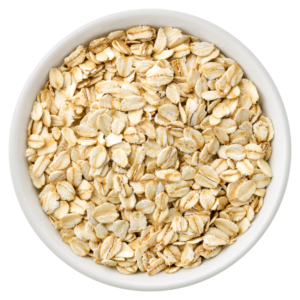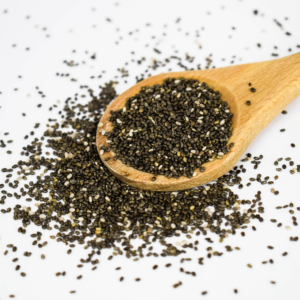
The beginning of the new year is a great time to make lifestyle changes to improve your health. In 2019, a survey of Americans found that 54% wanted to eat healthier in the new year. Additionally, it is estimated that 45 million Americans go on a diet each year. That’s 14 percent of Americans.
Are you considering a diet change in 2022? If so, you might be wondering which diet is the best for you. Do you have polycystic ovarian syndrome, metabolic syndrome, obesity, hypertension, cardiovascular disease, high cholesterol, insulin resistance, or type two diabetes? If you have one or several of these diagnoses, the cardiometabolic diet may be a great option for you.
The Cardiometabolic Diet
The cardiometabolic diet uses food as medicine to address the underlying causes of cardiovascular and metabolic disease like inflammation, insulin resistance, and stress. The Institute for Functional Medicine used a team of physicians and nutrition specialists to create the cardiometabolic diet. The cardiometabolic diet features the following components:
- Modified Mediterranean approach
- Low glycemic index and glycemic load
- Targeted calories
- Regular eating times
- High in fiber
- Low in simple sugars
- Balanced quality fats
- Condition-specific phytonutrients
The Mediterranean diet is a diet known for its health benefits like longevity and reduced risk of cardiovascular disease. Common ingredients in this diet include whole unprocessed foods like fruits, vegetables, whole grains, nuts, legumes, dairy, extra virgin olive oil, and spices. People who live in Mediterranean regions eat moderate amounts of poultry, fish, and red meat. In fact, 50 studies concluded that when people with metabolic syndrome eat a similar diet to the Mediterranean diet they experience changes in waist circumference, lipid levels, blood pressure, and glucose. The Mediterranean diet can be adapted to other cuisines like American, Mexican, and Asian by focusing on choosing whole, unprocessed foods instead of pre-packaged processed foods.
Consume Low Glycemic Index Foods
 The cardiometabolic diet also aims for a low glycemic index with low glycemic foods. Glucose is needed in the cell as energy and to best ensure that it gets into the cell, to allow blood sugar and insulin to remain constant throughout the day. Glycemic index compares foods and their impact on glucose to pure sugar’s impact on glucose in the blood. High glycemic index foods include white bread, white rice, breakfast cereals, cakes, cookies, watermelon, and pineapple. Medium glycemic index foods include brown rice, bananas, potatoes, and whole-grain bread. Low glycemic foods include legumes, nuts, seeds, oats, and most fruits and vegetables. As we all eat a combination of low, medium, and high glycemic index foods at meals, it is important to look at the glycemic load of the entire meal. If you know a meal is going to have some high glycemic index foods, eat the meal with plenty of protein and quality fats to help offset the spike in insulin and glucose.
The cardiometabolic diet also aims for a low glycemic index with low glycemic foods. Glucose is needed in the cell as energy and to best ensure that it gets into the cell, to allow blood sugar and insulin to remain constant throughout the day. Glycemic index compares foods and their impact on glucose to pure sugar’s impact on glucose in the blood. High glycemic index foods include white bread, white rice, breakfast cereals, cakes, cookies, watermelon, and pineapple. Medium glycemic index foods include brown rice, bananas, potatoes, and whole-grain bread. Low glycemic foods include legumes, nuts, seeds, oats, and most fruits and vegetables. As we all eat a combination of low, medium, and high glycemic index foods at meals, it is important to look at the glycemic load of the entire meal. If you know a meal is going to have some high glycemic index foods, eat the meal with plenty of protein and quality fats to help offset the spike in insulin and glucose.
Balance Blood Sugar and Insulin
But what do insulin and blood sugar have to do with reproductive health? Blood sugar and insulin impact reproductive hormones in the body. Women with polycystic ovarian syndrome often have insulin resistance, meaning that their cells have a hard time incorporating glucose. This leads to more glucose in the blood (hyperglycemia) and more insulin in the blood (hyperinsulinemia) to compensate. The liver and ovaries are both impacted by hyperinsulinemia. The liver stops making a molecule that binds testosterone and estrogen, causing more free estrogen and testosterone to move around the body. The ovary begins to produce more testosterone and androgens, which leads to more estrogen production. Thus, eating foods low in glycemic index and eating smaller portions of meals with a large glycemic load will lead to better-balanced hormones, as well as less hunger and fewer food cravings.
Set a Realistic Calorie Goal
To help individuals lose weight and achieve cardiometabolic balance, medical providers or nutrition specialists may work with patients to determine a targeted calorie goal. This goal is based on body weight, basal metabolic rate, activity level, and cardiovascular and metabolic risk factors. No two individuals have the same body, but in general, men need about 2,500 calories per day and women need about 2,000 calories per day.
We all know how busy the holidays can get. We go to Christmas parties, office luncheons, kids’ plays, concerts, and dance recital receptions and often skip major meals or eat multiple meals and snacks per day to fit it all in. Did you know that the average meal should provide enough energy to last four hours? If you eat breakfast at 8:00 am, then you should have enough energy and hunger satisfaction to last until 12:00 pm. Meals should leave you satisfied, energized, and focused. If not, you might be eating too many foods high in glycemic index or foods that are causing an intolerance.
Increase Fiber
 Another aspect of the cardiometabolic diet is eating foods high in fiber. Typically, Americans get about one-third of the fiber they need every day. Fiber is found in nuts, legumes, vegetables, and fruits. Fiber has many benefits. Fiber helps slow the release of glucose from food into the blood. It also helps the body trap toxins and undesirable compounds by eliminating them. Finally, fiber provides a food source for good bacteria in the gut. Some great sources of fiber include oat bran, barley, nuts, seeds, beans, lentils, peas, fruits, and vegetables.
Another aspect of the cardiometabolic diet is eating foods high in fiber. Typically, Americans get about one-third of the fiber they need every day. Fiber is found in nuts, legumes, vegetables, and fruits. Fiber has many benefits. Fiber helps slow the release of glucose from food into the blood. It also helps the body trap toxins and undesirable compounds by eliminating them. Finally, fiber provides a food source for good bacteria in the gut. Some great sources of fiber include oat bran, barley, nuts, seeds, beans, lentils, peas, fruits, and vegetables.
Reduce Sugars
The cardiometabolic diet aims to reduce the amount of added and simple sugars in meals. This is achieved by eliminating foods that have added sugars in them. Added sugars include sucrose, fructose, glucose, corn syrup, xylitol, sorbitol, Splenda, aspartame, stevia, cane sugar, and date sugar to name a few. A diet high in added refined sugars contributes to elevated fats in the blood (hypertriglyceridemia), low good cholesterol, and increased insulin resistance. When trying to indulge in sweets, try to indulge in fruits like apples, pears, and berries. Avoid all artificial sweeteners like aspartame, sucralose, acesulfame-K, and saccharin.
Limit Saturated Fats
 Dietary fats can be confusing for people trying to change their diet. Individuals with cardiovascular or metabolic diseases should do their best to limit saturated fat (like lard) and omega-6 fats (like in processed vegetable oils), as these can have inflammatory effects. Some saturated fats, like high-quality grass-fed butter, extra virgin olive oil, and coconut oil, are included in the cardiometabolic diet in small amounts. Fish, leafy greens, nuts, and seeds are excellent sources of omega-6s.
Dietary fats can be confusing for people trying to change their diet. Individuals with cardiovascular or metabolic diseases should do their best to limit saturated fat (like lard) and omega-6 fats (like in processed vegetable oils), as these can have inflammatory effects. Some saturated fats, like high-quality grass-fed butter, extra virgin olive oil, and coconut oil, are included in the cardiometabolic diet in small amounts. Fish, leafy greens, nuts, and seeds are excellent sources of omega-6s.
As many as 10,000 compounds have been identified in food. Some of these compounds help the body achieve cardiometabolic balance at the cellular level. Popular phytonutrients include resveratrol in grapes and red wine, astringent compounds in green tea, and bitter compounds in leafy greens. Scientists have found that some phytonutrients help improve insulin resistance, lower cholesterol, and lower blood pressure. Cinnamaldehyde in cinnamon and beta-glucan in oats and barley help regulate insulin and blood sugar. Carotenoids from tomatoes, grapefruit, and watermelon help reduce bad cholesterol. And quercetin in onions and polyphenols in pomegranates help reduce blood pressure.
To summarize, the cardiometabolic diet prides itself on helping individuals balance their cardiovascular and metabolic systems by using food as medicine. They help patients pursue whole, nutritious foods that maximize phytonutrients and anti-inflammatory properties while decreasing added sugar and unhealthy fats. The cardiometabolic diet is an excellent choice for individuals with cardiovascular disease, hypertension, insulin resistance, diabetes, and PCOS. If you would like specific dietary advice, please seek out one of the My Catholic Doctor nutrition professionals. Additionally, if you live in North Carolina and are seeking advice for pursuing healthy habits in the new year, please schedule an appointment with me, as I am eager to help you put your best foot forward into the new year!
Source: The Institute for Functional Medicine. (2021) Cardiometabolic Food Plan.
Author: Megan Blum, Physician Assistant and Fertility Provider with MyCatholicDoctor
Editor: Samantha Wright, Director of Education and Online Resources with MyCatholicDoctor
About Megan: PA Megan Blum is a physician assistant with a special interest in providing restorative reproductive care to women of all ages. She has special training in FEMM and Marquette Method and is a medical consultant for both models of women’s healthcare. She became a medical provider to help provide access to fertility-awareness-based medicine to all who seek it. She believes in finding the root cause of women’s health and endocrine issues to restore women’s bodies to optimum health.
Sources:
Ahmadi, S., Bashiri, R., Ghadiri-Anari, A., Nadjarzadeh, A. (2016) Antioxidant Supplements and Semen Parameters: An Evidence Based Review. International Journal of Reproductive Biomed, 14: 729-736.
Aranow, C. (2011). Vitamin D and the Immune System. Journal of Investigative Medicine, 59(6), 881-886.
Brighton, J. (2016, May). How to Increase Progesterone and Boost Fertility – 9 Methods.
Brighton, J. (2020, April). 14 Vitamin C Benefits You Should Know About.
Car, A., Maggini, S. (2017) Vitamin C and Immune Function. Nutrients, 9: 1211, Doi:10.3390/nu9111211.
Cito, G., Cocci, A., Micelli, E., et. al. (2020) Vitamin D and Male Fertility: An Updated Review. The World Journal of Men’s Health, 38(2), 164-177.
Ding, G., Liu, Y., Liu, M., Pan, J. et al. (2015) The Effects of Diabetes on Male Fertility and Epigenetic Regulation During Spermatogenesis. Asian Journal of Andrology, 17: 948-953.
Fallah, A., Mohammad-Hosani, A., Colagar, A. (2018) Zinc is an Essential Element for Male Fertility: A Review of Zn’s Role in Men’s Health, Germination, Sperm Quality, and Fertilization. Journal of Reproductive Infertility, 19:69-81.
Harvard T.H. Chan School of Public Health. (2021) Zinc.
Marik, P. (2021) An Overview of MATH+, I-MASK+, and I-RECOVER Protocols: A Guide to the Management of COVID-19. FLCCC, 10-11.
Stuart, A. (2021, May) Quercetin.
Torborg, L. (2017, April) Mayo Clinic Q and A: How Much Vitamin D Do I Need?
Vigil, P. (2020). Ovulation a Sign of Health. Reproductive Health Research Institute
Zeratsky, K. (2020, March) Is It Possible to Take Too Much Vitamin C?
Leave a reply